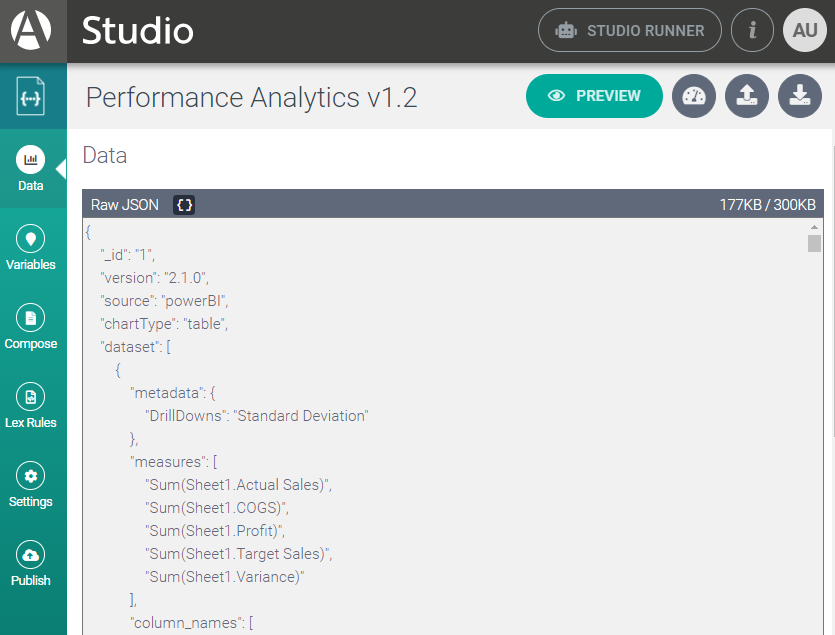Design of input
The most important design decision in a Studio project is the input, which forms the interface between the NLG system’s data side and its language side. Once this has been designed, the developer can then specify how the data and language layers should work.
If you perform data processing outside Studio, the input would be the output of the pre-processing stage (discussed in Pre-processing of data).
Currently, Arria NLG Studio supports two types of input data: table data and JSON data.

Tip
Keep the input as simple as possible, yet comprehensive enough to generate all possible variations of your expected narrative. If the input to Studio is a table, make sure you have all the columns needed for the narrative you plan to generate. Similarly, if using JSON input, make sure it contains all the relevant fields from which your narrative will draw.
Ideally, you should be able to map the input data to the narrative without requiring much manipulation.
If the expected narrative requires that columns (in table data) or fields (in JSON data) be transformed or combined, it is best to do this manipulation at the data-processing stage.